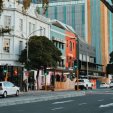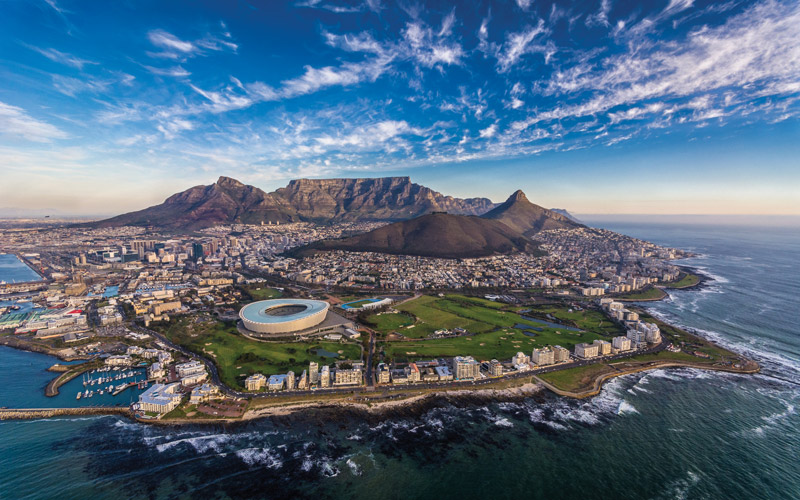Blind tastings, local products and more at Saint Juz
A Short Cultural History of Cape Town
How our early ancestors inspired the society we live in
Capetonians like to guzzle wine like its going out of fashion and surf atop totally turbular waves. Have you ever wondered whose fault this is? An individual’s personal preference is largely innate, but you can’t deny that this is also based on external influences. It might surprise you to know that Cape Town has many poignant ancestors who have shaped the society in which we live today and ultimately, what each individual likes (or doesn’t like that much) about the Mother City. The early history of Cape Town can explain many of the typical habits of 21st century Capetonians.
Ancient Women sent their men off ‘hunting’ to get rid of them for the afternoon
South Africans have a penchant for meat, thanks to some of the first human communities in the Cape Peninsula and the Western Cape; the Bushmen (San) and the Hottentot (Khoi Khoi). Originally, the women would send the men off to hunt , fish and look for plants that didn’t actually exist (a clever ploy to get rid of them for the afternoon, whilst they headed off to the beach with the girls). Men are notoriously stupid, so they put the meat in their mouths without question. However, such risk lead to the discovery of a whole wealth of meaty morsels such as, kudu, springbok, lamb and boerewors. Ever since then South Africans have since been chucking meat on the braai at every opportunity.
‘This Cape is a most windy thing, and the windiest Cape in the whole circumference of the earth’
In 1580, Sir Francis Drake, from Portugal, surfed into the Cape on the Golden Hind (probably an awesome, 30 foot break) and proclaimed: ‘This Cape is a most windy thing, and the windiest Cape in the whole circumference of the earth. Cowabunga, Dude!’. Ever since this discovery, bathers have endured being sandblasted by the wind on Camps Bay beach for the sake of that all-important tan and surfer dudes have flocked to Muizenberg to ride the totally turbular and most bodacious waves.
Cape Town is surrounded by mountains, but some of these ruddy great slabs of sandstone are deemed more important than others.
In 1503, Antonio de Saldanha scaled a flat-topped mountain with a thick white cloud resting on top of it. Why no one had thought to do this before is beyond me – it only takes three hours to walk to the summit. Regardless, Antonio had an epiphany – why not call it something really clever, like Table Mountain? In 1601, Van Spilbergen decided to name the entire bay Table Bay (equally unoriginal). Despite its uninspiring name, a number of celebrity fans have been quick to jump on the Table Mountain bandwagon, from the Archbishop Emeritus Desmond Tutu, to Ne-Yo. Table Mountain is featured on the flag of Cape Town and other local insignia and is a popular tourist destination, serviced by its own cable car. From the summit, visitors are afforded spectacular, 360 degree views of the Mother City.
Cape Town is overrun with American tourists who insist on bringing hamburgers to a braai, thanks to Jan
In 1652, Jan Anthony Van Riebeeck, a Dutch commander of three small ships, came sailing into Cape Town. Not content with growing a couple of carrots, bartering for a sheep and building a hospital, Jan set about developing a new tourism industry, complete with guest houses, taverns and the Company Gardens. Cape Town is now overrun with American tourists who insist on bringing hamburgers to a braai and Japanese tourists who drag around cameras larger than themselves (Ja, thanks bru!). However, thanks to Jan, there are around 75 000 people employed by Cape Town’s tourism industry today.
Simon was a well travelled, free-living hippy
A visit to Cape Town would not be complete without a visit to the Winelands. In 1679, Simon Van der Stel, a well travelled, free-living hippy, arrived in Cape Town as governor. First, he developed some small farms and a town (now known as Stellenbosch). He was famous for throwing wild birthday parties, at which Capetonians got absolutely battered, which paved the way for the outdoor raves, Balkanology and vibey Long Street of today. Why stop there? He continued to develop wine settlements in Paarl and Drakenstein, then invited his mates over (200 Hugenot refugees to be exact) to join him in his grape stamping frivolities. They even chucked some poor unsuspecting elephants off their breeding ground, ‘Oliphantschoek’ (a drunken dare), and the gourmet capital of the world was born, known to the modern day Capetonian as Franschhoek.
Keith decided that Cape Town needed some British Culture
In 1795, Admiral Keith Elphinstone transcended on Simon’s Town in a cloud of Sunday diners and Earl Grey tea. Outraged by Van der Stel’s drunken debauchery and illegal raves, Keith decided that Cape Town needed some British Culture. He introduced leisure activities, known as ‘rational pastimes’ such as, a pier, the act of sunbathing, musical concerts, theatre and cinema. He even went as far as to dub Muizenberg as South Africa’s answer to the ‘Brighton Pier’ (thankfully, sans the appalling British weather).
We wouldn’t be having all this fun together, if it wasn’t for one man
Despite the efforts of Cape Town’s cultural predecessors, not everyone was having fun – after a couple of wars, a lot of Capetonians were denied access to privileged suburbs, education and jobs. So, Nelson Mandela decided to do something about it. He didn’t surf into Cape Town, or sail in for that matter, because he was already here. He endured 27 years of harsh imprisonment, for his impenetrable belief in a society that encompassed all. As a result, he became the first South African president to be elected in a fully representative democratic election and his negotiations lead to a multi-racial democracy. Because of Mandela, we are not only inspired to address challenges such as, housing, health, drugs and crime, but we challenge such issues together. Capetonians wouldn’t have stood together at Cape Town Carnival, or at the FIFA Fan Fest, if it weren’t for Mandela’s incredible fight.
In conclusion we have learnt a lot from our ancestors; crafty ancient women, Francis the surfer, Antonio the explorer, Simon the drunkard, Keith the refined and Nelson the visionary. Thanks to these individuals, Cape Town is a city full of laid back people who enjoy the finer things in life; surf, nature, wine, food, hospitality and art. All of these legacies can be enjoyed together, which is something we all should be proud of.
Ever wondered why Cape Town is so gay friendly or what Freedom Day really means to Capetonians? Be sure to view our News Section
By Lisa Nevitt
---
A great activity with real substance to fill those early evening hours before dinner, theatre or other night-time entertainment at The Daily Music Show.
Popular the whole year but particularly over Easter, we’ve got the inside scoop on making the ultimate pickled fish recipe.
Walk with ghosts in a haunted village and hear chilling historic tales during Simon’s Town Ghost Walks.








